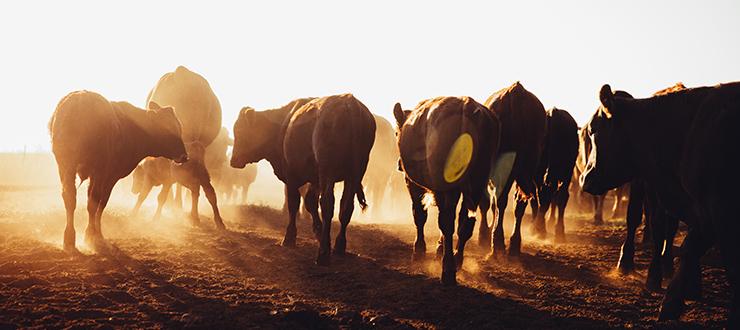
Some terms associated with forage-livestock production are unique. Here are a few that are often used, along with definitions or explanations of each. Knowing what these terms mean can help a person better understand discussions of various aspects of forage-livestock agriculture.
Alkaloids- A large group of complex compounds that contain nitrogen and occur as by-products of plant biochemical processes, particularly in certain plant families. Various alkaloids affect the palatability of the forage of some plants and are a toxic principle in many poisonous plants.
Boot Stage-The stage just before seedhead emergence of grasses when the seedhead is inside the swollen top of a flowering stem.
Forb- Any herbaceous broadleaf plant that is not a grass and is not grass-like (sedges and rushes are grass-like plants).
Grazing Management- The manipulation of animal grazing in pursuit of one or more defined objectives.
Grazing Season- The time period during which grazing can normally be practiced each year or portion of each year.
Pastureland- Land devoted to the production of indigenous (naturally occurring) or introduced forage plants for harvest primarily by grazing.
Photoperiodism- The reaction of plants to length of day (the number of hours of light versus darkness). The flowering of many plants is greatly affected by photoperiod. It is actually the uninterrupted length of the dark period that is important.
Pure Live Seed- A term applied to seeding rate recommendations for plant species that often have low seed germination levels. PLS can be calculated by multiplying purity and germination levels and then dividing by 100.
Range- Land supporting indigenous vegetation that is grazed or that has the potential to be grazed, and is managed as a natural ecosystem.
Relative Feed Value- An index used to compare the intake and energy value of a forage (usually hay) to other forages. It is calculated by multiplying digestible dry matter times dry matter intake and multiplying by a constant (which varies with different species). Full bloom alfalfa has an RFV of 100; higher or lower quality forages have an RFV that is higher or lower than 100, respectively.
Respiration- The breakdown of food materials within plants. Respiration occurs in all living organisms, including plants.
Rhizome- A horizontal underground stem that acts as a food storage site and as a means of vegetative reproducdtion.
Seed Inoculation- The process of applying Rhizobium bacteria to the seed of a legume to ensure occurrence of the symbiotic (mutually beneficial) legume/bacteria relationship that results in biological nitrogen fixation.
Seed Scarification- The process of breaking down a hard seed coat that would otherwise prevent seed (mostly legume seed) from germinating promptly. This can be accomplished in various ways, most commonly by abrasion of seed coats by a cylindrical device made for this purpose.
Stocking Density- The relationship between the number of animals and the specific unit of land being grazed at any one point in time.
Stocking Rate- The relationship between the number of animals and an entire grazing management unit utilized over a specified time.
Stockpiling Forage- To allow forage to accumulate for grazing at a later period.
Stolon- A modified plant stem that grows horizontally above ground and roots at the nodes.
Sward- A population of herbaceous plants, characterized by a relatively short habit of growth and relatively continuous ground cover, including both above- and below-grown parts.
Test Weight- The weight per unit volume (usually expressed as pounds per bushels) of the seed of a forage crops. This term is most commonly associated with the small grains. The higher or lower the test weight, the better or worse, respectively, the seed vigor.
Vegetative- Non-reproductive plant parts (i.e. leaf and stem), in contrast to reproductive plant parts (i.e. flower and seed), in developmental stages of plant growth.
Vernalization- The process of meeting the cold-weather requirement of a plant. Many plants require a certain minimum amount of exposure to cold in order to flower.
Weathering- The term used to refer to the effects that climatic conditions have on hay.
Foraging Ahead is a column presented by Ragan & Massey and written by Dr. Don Ball, Professor Emeritus at Auburn University. Dr. Ball is one of the authors of the popular book “Southern Forages,” which can be found via a computer search that uses the words, “Southern Forages- The Fertilizer Institute.”
